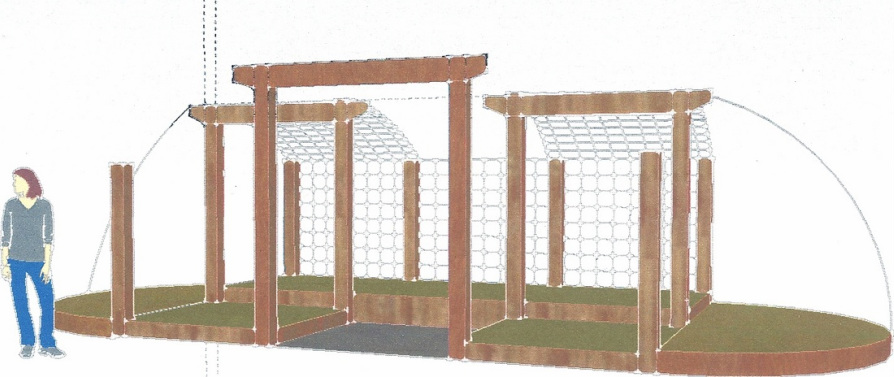Structure in the Garden: Four season interest & multiple functions
Paths, steps, edging, fences, trellises, shaping of beds and the architectural forms of plants all contribute to garden structure.
Wonder-Flora integrates beauty and purpose within every element of the landscape design, solving problems with sensible solutions using a whole systems approach.
Wonder-Flora integrates beauty and purpose within every element of the landscape design, solving problems with sensible solutions using a whole systems approach.
Garden trellises provide structure for training fruiting trees and vines, protect plants from deer and pets and may have a roof for collection of rainwater.
Garden structures are the most permanent and often
the most expensive component of the landscape design. Respecting the value of
your investment, Wonder-Flora is dedicated to finding design solutions that
solve multiple problems, or “stacking functions.”
Some possible solutions to the issues that may apply in your situation:
Some possible solutions to the issues that may apply in your situation:
- Conveyance systems (gutters, runnels, etc.) for stormwater runoff
- Green roofs for filtering rainwater
- Rain barrels and cisterns for rainwater storage
- Permeable pavement and gravel beds for stormwater infiltration
- Raised planting beds for coping with dense, wet soil
- Garden sheds, greenhouses, covered patios
- Trellises, arbors and fences to define spaces and
as plant supports
As an example of stacking functions, a garden shed
design may include a green roof that filters stormwater before it flows into
rain barrels adjacent to an edible garden. The wall of the shed supports a
trellis structure covered with edible plants and built-in seating for a shady
summer retreat. Permeable paving in this area receives the overflow from the
rain barrels, and allows storage of large quantities of rain water to slowly
infiltrate into the soil The fence and gate that protects the garden from dogs
or deer is also tied to the structure of the shed, reducing the total amount of
concrete and wood used. In every design the placement of elements is shaped by the site. The existing features, client desires for garden style and function, the need for access and privacy screening, sun and wind patterns, and soil type are always assessed and integrated into the plan for your site.
